Are you tired of seeing gaps in your fence? Whether you just installed a brand new fence or have an older one that has seen better days, gaps can be unsightly and compromise the privacy and security of your property.
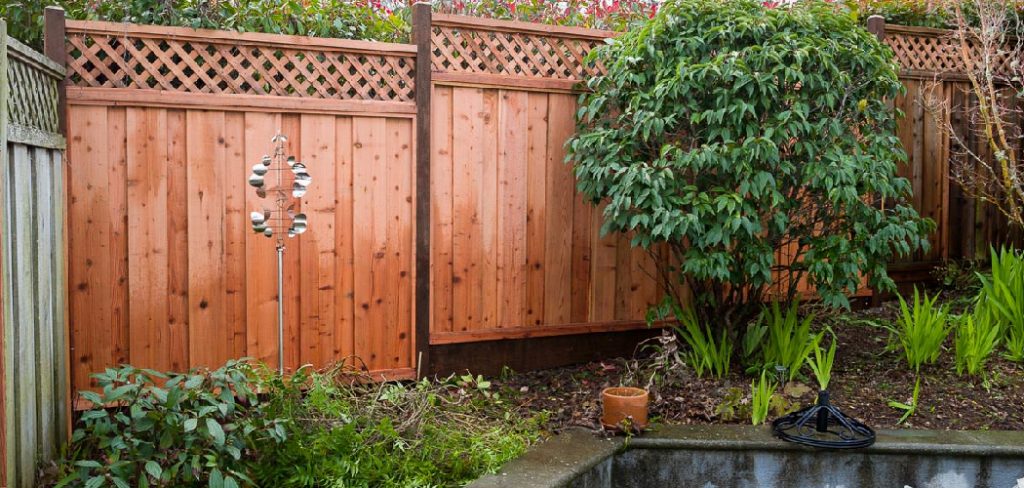
Gaps in a fence can compromise not only the privacy and security of your property but also detract from its overall appearance. Whether these gaps have appeared over time due to weathering and wear or were a result of imprecise installation, finding effective ways to cover them is key to maintaining the integrity and aesthetic appeal of your fencing.
This guide will explore various practical and creative solutions on how to cover gaps in fence, ensuring your outdoor space remains secure, private, and visually pleasing. From simple DIY fixes to more permanent solutions, we’ll cover a range of options to suit different types of fences and budgets.
What are the Benefits of Covering Gaps in Fence?
Before we dive into the different methods of covering gaps in fences, it’s important to understand why it’s necessary. Here are some key benefits that come with fixing and covering gaps in your fencing:
- Enhanced Privacy: One of the main reasons people install fences is to create a barrier between their property and the outside world. Any gaps in the fence can compromise this privacy and make you feel exposed.
- Improved Security: A strong fence acts as a deterrent to potential intruders. Any gaps in the fencing can provide an entry point for unwanted visitors, compromising the security of your property.
- Prevents Escape of Pets and Children: If you have pets or young children, covering gaps in your fence is crucial in preventing them from escaping and getting injured or lost.
- Aesthetically Pleasing: A well-maintained fence adds to the overall curb appeal of your property. By covering gaps, you can ensure that your fencing looks neat and visually appealing.
These are just a few of the many benefits of covering gaps in fences. Now, let’s explore some practical ways to achieve this.
What Will You Need?
Before we delve into the different ways to cover gaps in your fence, it’s important to ensure you have the necessary tools and materials. Depending on the chosen solution, you may need some or all of the following items:
- Measuring tape
- Hammer
- Nails/screws
- Drill/driver
- Wood filler/putty
- Sandpaper
- Paint/stain (if applicable)
- Fence panels/pickets (if replacing sections of fence)
- Garden trellis/screening material (if using as a cover-up)
- Landscape fabric/mesh netting (to prevent small animals from entering the gap)
Make sure to have these items on hand before you begin. Additionally, wearing protective gear such as gloves and safety glasses when handling tools and materials is always a good idea.
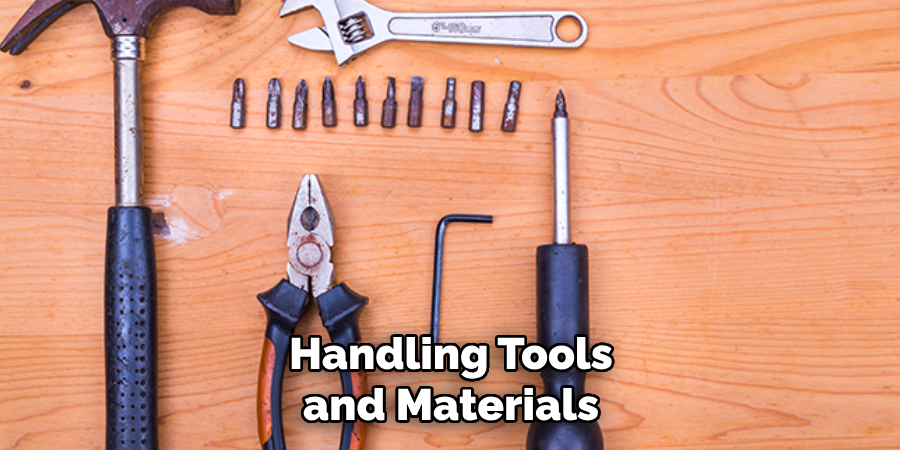
10 Easy Steps on How to Cover Gaps in Fence
Step 1. Use Filler Panels:
One of the simplest and most effective ways to cover gaps in a fence is by using filler panels. These can be made from the same material as your original fence, ensuring that the aesthetic is consistent and seamless. To begin, accurately measure the gap size so that you can cut or purchase filler panels that fit perfectly.
If you’re using wood, treat the panels with a weather-resistant sealant to prolong their lifespan and maintain their appearance. Installation is straightforward—attach the panels to the existing fence structure using screws or nails, ensuring they are securely fastened to withstand weather conditions and provide lasting coverage. This method not only enhances privacy and security but also restores the visual integrity of your fence.
Step 2. Plant Climbing Vines:
For those who prefer a more natural look, planting climbing vines is an excellent way to cover gaps in a fence while adding a touch of greenery to your outdoor space. Start by selecting vines that are suitable for your climate and the amount of sunlight your fence receives. Some popular options include ivy, jasmine, or clematis.
Next, plant the vines near the base of the fence, ensuring they have enough soil and water to thrive. Over time, these vines will grow and weave through the fence, covering gaps and creating a living barrier. This solution not only enhances the privacy and aesthetic appeal of your fence but also benefits the environment by providing habitat for wildlife.
Step 3. Install a Trellis:
A trellis is not only a practical solution for covering gaps in a fence but also offers an opportunity to beautify your outdoor space. Trellises come in a variety of sizes and designs, allowing you to choose one that complements your fence and garden aesthetic. To install, position the trellis against the fence where gaps are present, ensuring it is stable and secure.
You can use ties or screws to attach it firmly to the fence. For an added touch of nature, consider planting climbing plants at the base of the trellis. These plants will grow over time, intertwining with the trellis design and covering any unsightly gaps. This method combines functionality with visual appeal, making it a popular choice among homeowners looking to enhance their fencing.
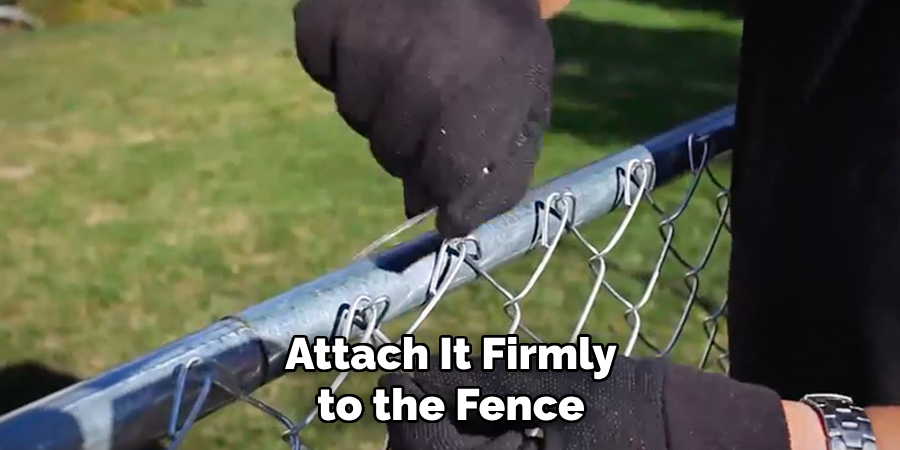
Step 4. Use Decorative Fence Slats:
Decorative fence slats offer a unique and aesthetic option for covering gaps in your fence. They are available in various styles and materials, including wood, vinyl, and metal, allowing you to find an option that matches your existing fence and home exterior. To use fence slats, simply measure the width of the gaps and cut the slats to size if necessary.
Then, slot them into place between the existing fence posts or panels, securing them with screws or nails as needed. Not only do decorative slats enhance the fence’s appearance, but they also increase privacy by filling in spaces where visibility into your property might be highest. This method is ideal for those seeking a balance between functional gap coverage and creative, personal expression in their outdoor space.
Step 5. Attach Privacy Screens:
Privacy screens are a versatile and effective way to cover gaps in your fence while enhancing the overall privacy of your outdoor area. Available in various materials such as bamboo, wicker, or even fabric, privacy screens can be selected to match or complement the design of your garden and fencing.
To use privacy screens, measure the length of the gap and choose a screen that fits or can be easily adjusted to size. Attach the screen directly to the fence using ties, nails, or screws, ensuring it is securely in place. This solution covers gaps efficiently and provides an immediate barrier against prying eyes, making it ideal for those seeking quick and easy privacy enhancements.
Step 6. Hang Outdoor Curtains:
Outdoor curtains offer a flexible and stylish solution for covering gaps in your fence. They can be hung from rods or wires installed at the top of the fence, allowing you to draw them closed to cover gaps or open them for more light and visibility. Curtains come in a variety of colors, patterns, and materials, enabling you to choose a design that complements your outdoor decor.
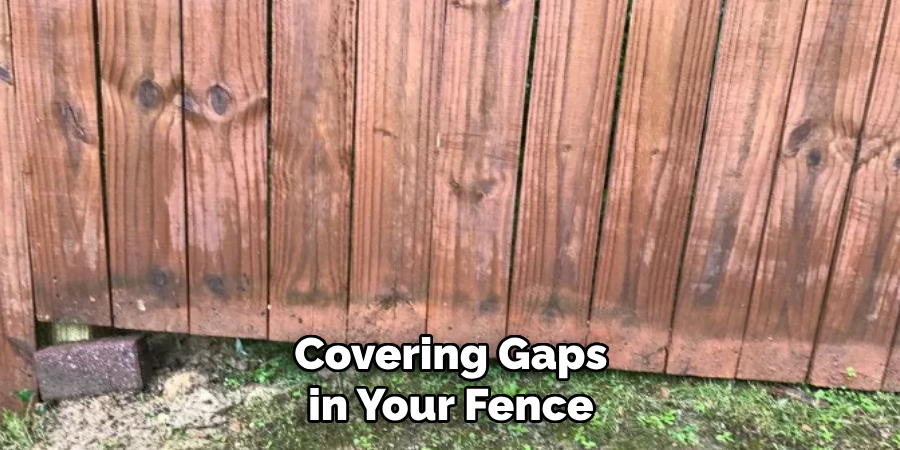
This method covers any unsightly gaps efficiently and adds a cozy, inviting ambiance to your space. Additionally, outdoor curtains can provide adjustable privacy levels and are easy to remove or replace, making them a versatile option for gap coverage.
Step 7. Erect Bamboo or Reed Fencing:
A quick and environmentally friendly method to cover gaps in an existing fence is by erecting bamboo or reed fencing. This natural fencing material is both lightweight and durable, providing an aesthetically pleasing and practical solution to privacy and gap coverage. To implement this method, roll out the bamboo or reed fencing along the length of the gap and secure it to the existing fence structure using wire or zip ties.
The natural materials blend seamlessly into outdoor spaces and can be easily sized to fit any gap, offering a flexible and attractive option to enhance privacy and fence integrity. This approach not only covers unsightly gaps but also introduces an element of rustic charm to your garden’s ambiance.
Step 8. Integrate Outdoor Art Panels:
Introducing outdoor art panels is a creative way to cover gaps in your fence while simultaneously elevating the aesthetic appeal of your outdoor space. Art panels can be found in a variety of materials, such as metal, wood, or composite, and feature intricate designs or patterns that captivate the eye. To utilize them, select panels that fit the dimensions of the gaps or can be custom-sized.
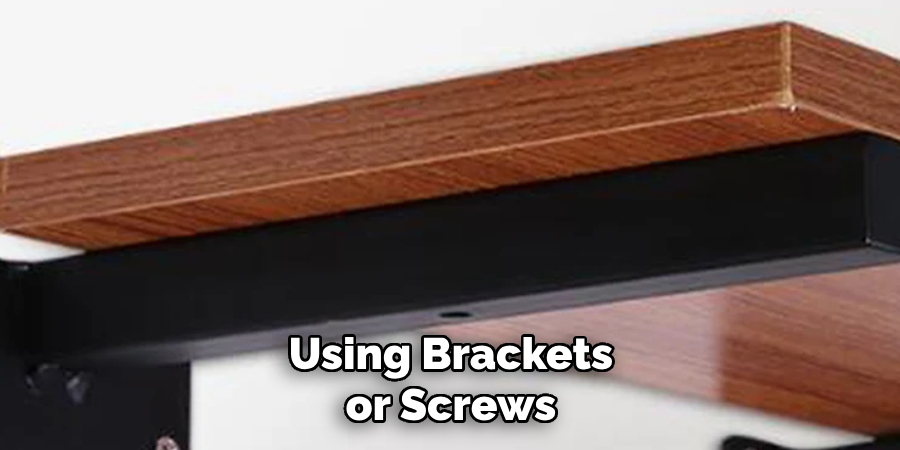
Attach the panels to the fence securely using brackets or screws, ensuring they are positioned strategically to cover the gaps. This method serves the practical purpose of enhancing privacy and transforms your fence into a dynamic piece of art, adding character and sophistication to your garden or patio area.
Step 9. Implement Landscaping with Shrubbery:
For homeowners who prefer a more natural approach to filling gaps in their fences, landscaping with shrubbery is an effective and beautiful solution. Choosing dense and fast-growing shrubs such as boxwood, holly, or arborvitae provides privacy and adds greenery and life to your outdoor space.
To use this method, plan the layout of the shrubs along the gaps in your fence, ensuring each plant has enough room to grow to its full potential. Over time, these shrubs will mature and fill in any openings, creating a natural living barrier that enhances both privacy and the aesthetic appeal of your garden. This environmentally friendly option covers unsightly gaps and contributes to the local ecosystem by supporting biodiversity.
Step 10. Install Reflective Glass Beads or Panels:
Consider installing reflective glass beads or panels for a modern twist on covering fence gaps while adding an element of light and visual interest. This innovative solution not only disguises any gaps in the fence but also creates a unique visual effect as the glass reflects sunlight during the day and ambient light at night.
To incorporate this option, measure the areas where gaps are present and select glass beads or panels that fit these dimensions. Secure them to the fence with a sturdy adhesive or frame to ensure stability.
This method is particularly suited for contemporary outdoor spaces looking to blend functionality with avant-garde design aesthetics, providing a dazzling yet effective means to ensure privacy and enhance the overall ambiance of your garden or patio area.
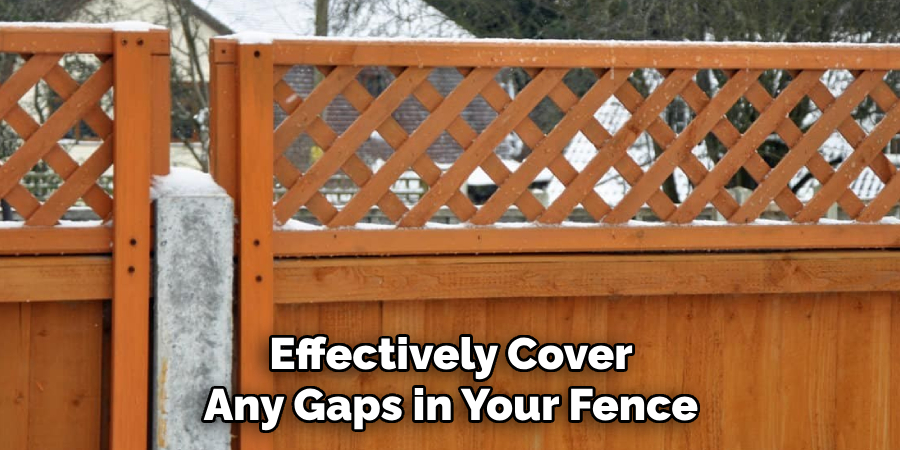
By following these simple steps, you can easily and effectively cover any gaps in your fence while enhancing privacy and adding character to your outdoor space.
5 Additional Tips and Tricks
- Seasonal Adjustments: Consider seasonal decorations or plants that can temporarily cover fence gaps. For instance, string lights, hanging planters, or even seasonal vines like morning glory in summer can offer both beauty and privacy.
- Layering Solutions: Sometimes, more than a single method may be needed. Different solutions, such as combining shrubbery with privacy screens or art panels, can enhance aesthetics and privacy more effectively than using one method alone.
- Maintenance Checks: Regularly inspect your fence for new gaps or damage. Early detection can prevent small issues from becoming bigger problems and helps to maintain the integrity and appearance of your fence over time.
- Consult with Neighbors: If the fence is shared or affects your neighbors, involve them in your plans. This can lead to shared effort and cost and also ensure that the solution is agreeable to both parties, fostering a positive relationship.
- Professional Advice: For larger gaps or more complex issues, consulting with a landscaping professional or fence specialist might be beneficial. They can offer customized solutions that perfectly fit your needs and preferences, ensuring long-term satisfaction and durability.
With these additional tips and tricks, you can further personalize and improve the process of covering gaps in your fence.
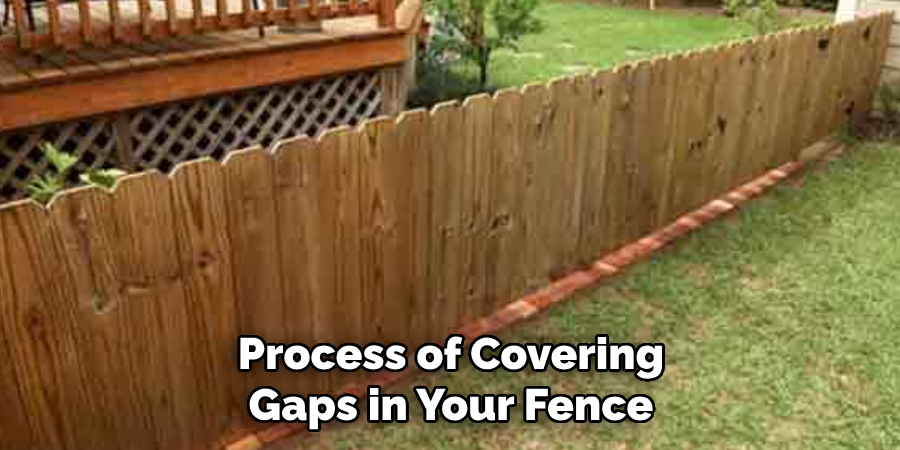
5 Things You Should Avoid When Covering Gaps in Your Fence
- Ignoring Local Regulations: Before starting any modifications to your fence, make sure to check local zoning laws and regulations. Unauthorized modifications can result in fines or being required to undo your work.
- Compromising Fence Stability: Avoid attaching heavy items directly to your fence without ensuring it can support the weight. Over time, this can cause structural damage, leading to more gaps or even collapse.
- Using Materials That Clash: While it’s tempting to go for the quickest fix, using materials that don’t match or complement your existing fence can detract from your home’s overall aesthetic. Aim for solutions that blend well.
- Neglecting Long-Term Maintenance: Whatever solution you choose to cover gaps in your fence, consider its maintenance needs. High-maintenance options look good initially but can become burdensome over time.
- Overlooking Privacy and Security: While covering gaps, it’s essential not to compromise on privacy and security. Avoid solutions that might make it easier for intruders to climb over or see through your fence.
By avoiding these common mistakes, you can ensure that your efforts to cover gaps in your fence are both effective and sustainable in the long run.
Should I Leave Gaps in My Fence?
Ultimately, deciding to leave gaps in your fence or cover them depends on your preferences and needs. Covering gaps is a practical solution that can enhance your outdoor space if you value privacy and aesthetics.
However, leaving gaps can also be a valid choice if you prefer a more natural look or don’t mind the visibility. Whatever you decide, remember to consider factors such as your budget, time and effort investment, and any local regulations that may apply. With the variety of options available, you can easily find a solution that best suits your unique situation and creates an outdoor space you can truly enjoy.
So don’t let gaps in your fence keep you from enjoying your backyard oasis – get creative and find the perfect solution for you.
Which Fence Style is Best?
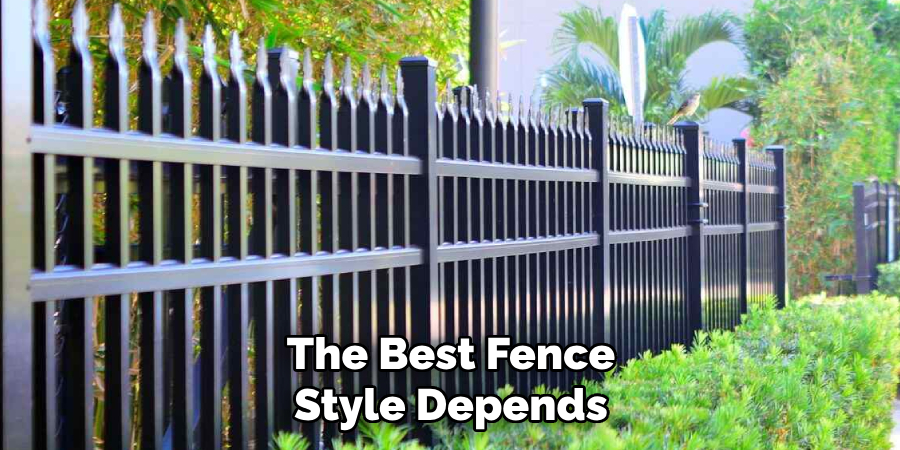
There is no one-size-fits-all answer to this question, as the best fence style depends on various factors such as your budget, personal preferences, and needs. Some popular options include traditional wood or vinyl privacy fences, metal and wrought iron fences, and natural options like hedges or shrubs.
When choosing a fence style, consider factors such as maintenance requirements, durability, and aesthetic appeal. Ultimately, the best fence style for you is one that meets your specific needs and enhances the overall appearance of your outdoor space.
So do your research, consider all options, and choose the perfect fence style that fits both your practical and aesthetic requirements.
Conclusion
How to cover gaps in fence can significantly enhance the privacy, aesthetics, and security of your outdoor living space. With the variety of methods and materials available, from using decorative panels and shrubs to incorporating glass beads for a more avant-garde look, there’s a solution to fit every style and budget.
By avoiding common pitfalls such as neglecting long-term maintenance or compromising fence stability, you can ensure your chosen method is both effective and sustainable. Remember, the ultimate goal is to create a serene and private oasis in your backyard that meets your specific needs while complying with any local regulations.
Whether you opt for a DIY approach or consult with professionals, covering gaps in your fence is a worthwhile investment into the comfort and appeal of your home.
About
Safety Fic is a distinguished figure in the world of Diy design, with a decade of expertise creating innovative and sustainable Diy solutions. His professional focus lies in merging traditional craftsmanship with modern manufacturing techniques, fostering designs that are both practical and environmentally conscious. As the author of diy, Safety Fic delves into the art and science of Safety Fic-making, inspiring artisans and industry professionals alike.
Education RMIT University
(Melbourne, Australia) Associate Degree in Design (Safety Fic) Focus on sustainable design, industry-driven projects, and practical craftsmanship. Gained hands-on experience with traditional and digital manufacturing tools, such as CAD and CNC software.
Nottingham Trent University
(United Kingdom) Bachelor’s in diyfastly.com and Product Design (Honors) Specialized in product design with a focus on blending creativity with production techniques. Participated in industry projects, working with companies like John Lewis and Vitsoe to gain real-world insights.
Publications and Impact
In diy, Safety Fic his insights on indoor design processes, materials, and strategies for efficient production. His writing bridges the gap between artisan knowledge and modern industry needs, making it a must-read for both budding designers and seasoned professionals.
